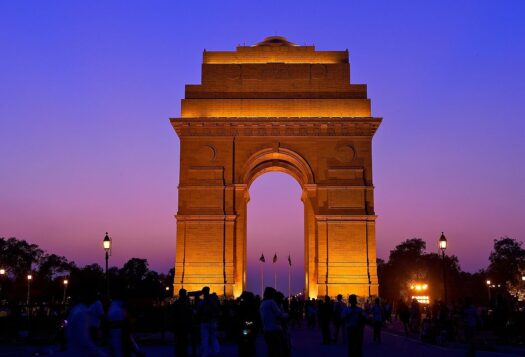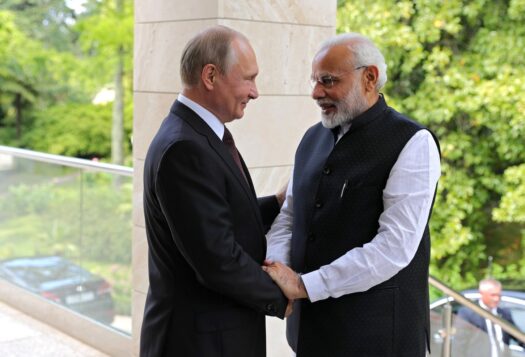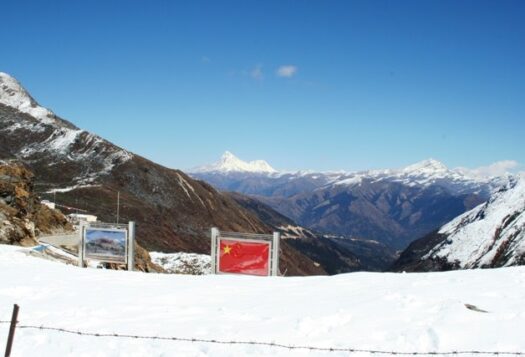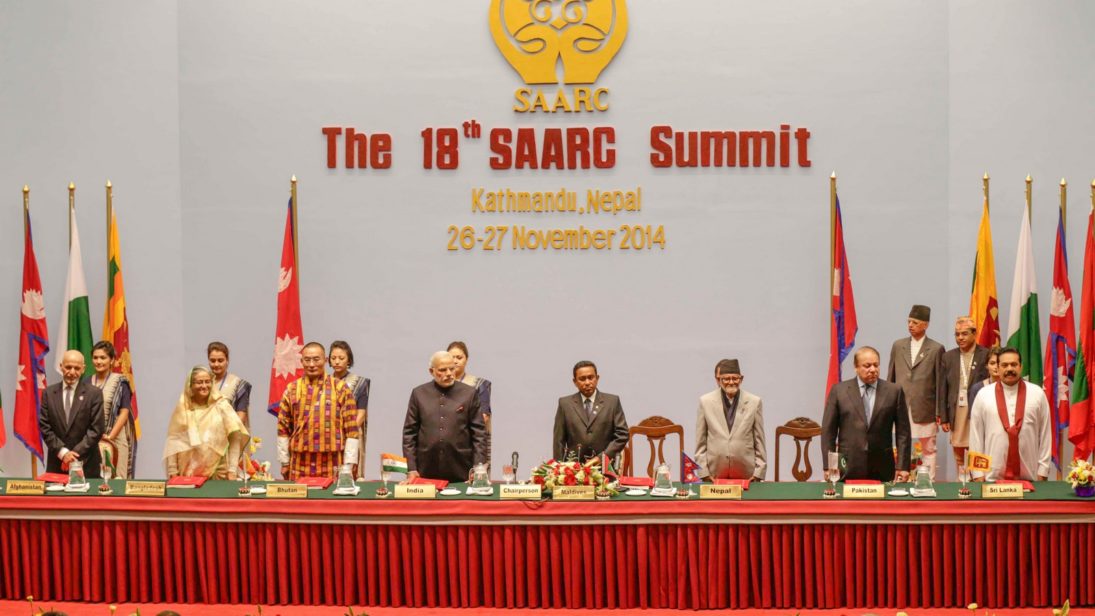
The management of COVID-19 reveals which countries are taking the lead in geopolitics in South Asia. On March 12, 2020, Indian Prime Minister Narendra Modi proposed to the South Asian Association for Regional Cooperation (SAARC) countries a strategy to deal with the Coronavirus challenge through a video conference. It was a move that surprised many regional commentators and analysts.
SAARC has practically remained dormant since New Delhi refused to participate in the 19th SAARC Summit of Heads of Governments of Member States to be held in Islamabad in 2016. Tellingly, after New Delhi’s boycotted the summit, citing terrorism concerns from Pakistan, almost all other SAARC member states, including Sri Lanka, Bangladesh, Afghanistan, Bhutan, and the Maldives followed India’s suit.
The last meeting of heads of governments of member states was held in November 2014, in Kathmandu, Nepal. On March 15, 2020, it was the first time in over six years that the heads of governments for all of South Asia sat together in a virtual platform to discuss a key regional issue. Heads of Governments of all member states, save Pakistan, participated in the video conference. In the place of Pakistani premier Imran Khan, his Special Assistant on Health Affairs, Zafar Mirza participated in the e-conference.
In the virtual meeting, the COVID-19 Emergency Fund was established to fight COVID-19 in the region collectively. All countries, again save Pakistan, contributed to the fund. India contributed ($10 million), Sri Lanka ($5 million), Bangladesh ($1.5 million), Nepal and Afghanistan ($1 million each), and the Maldives and Bhutan $200,000 and $100,000, respectively, to an aggregate of $18 million.
On March 15, 2020, it was the first time in over six years that the heads of governments for all of South Asia sat together in a virtual platform to discuss a key regional issue. Heads of Governments of all member states, save Pakistan, participated in the video-conference.
Pakistan argued that the Emergency Fund should be established in SAARC’s secretariat general in Nepal, not in India. Until this will occur Islamabad will not contribute to the Fund. Despite the absence of Pakistan from the initiative, the Indian Government considered the overall response as an “encouraging” one.
The second video conference of health ministers of SAARC member states was next held on March 27. A week later on April 8, a third e-conference of SAARC trade officials was convened to assess the implications of COVID-19 on intra-regional trade stemming from travel restrictions.
Pakistan again refused to be part of the discussion, insisting on the argument that only when the SAARC headquarters in Nepal led all such activities, could the meetings be truly effective. “Since the SAARC Secretariat was not part of today’s Video-Conference, Pakistan chose not to participate,” read the Pakistani foreign office’s statement.
What do the conferences and Pakistan’s hesitant participation reflect in terms of South Asia’s power politics?
Despite the onset of a global pandemic and the risks of a major economic downturn, Pakistan is in no mood to welcome an initiative from India, and to see Narendra Modi taking a leadership role in South Asia. Pakistan’s abstention from any active participation in addressing COVID-19 has important implications for Islamabad as Imran Khan has lost a major chance of playing a constructive role and boosting Pakistan’s engagement with key South Asian countries.
Pakistan’s foreign minister Shah Mahmood Qureshi has contacted all his counterparts in South Asia, except India and Afghanistan, for a SAARC health conference at a “public forum.” This suggests a constant effort on Pakistan’s part to take the charge, and not let India be the regional leader, irrespective of whether other South Asian countries agree to Pakistan’s call. If India does not participate, it will be hard to see if other countries do given the size of India in region. The situation will inevitably force Pakistan to look outside the region for cooperation.
Thus it is perhaps unsurprising that Pakistan’s foreign minister telephoned his Malaysian and Singaporean counterparts for cooperation and support in overcoming the coronavirus challenge. For the past couple of years, Pakistan has tried to strengthen its relations with Turkey, Malaysia and to a varying extent with Iran, as well as key partners China and Saudi Arabia, to retain some form of a voice in international forums and pressurize India on the matters of Kashmir situation and the South Asian strategic stability.
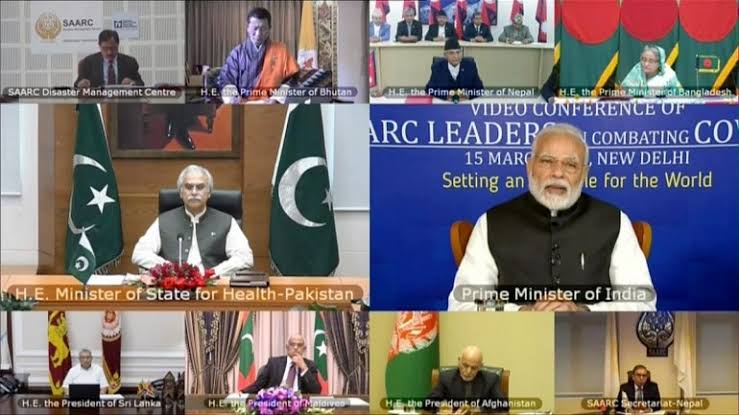
Another way to look at the power politics being played out in South Asia is in terms of U.S.-China geopolitics in the region.
Three types of capabilities characterize a leadership role in a global crisis, wrote Kurt Campbell and Rush Doshi in their analysis of how COVID-19 could restructure the world order. The three characteristics are “managing the problem at home, supplying global public goods, and coordinating a global response.” China is probably doing far better than the U.S. in all three categories.
Beijing has managed the coronavirus crisis effectively within the country; it is supplying testing kits, tracking/monitoring technology, and personnel protection equipment (PPE) all over the world and is coordinating with all the affected countries to tackle the challenge head on. The United States’ role in these three departments is all but non-existent.
China has reportedly donated up to 170,000 PPE kits to India, and 12,000 testing kits, 300,000 masks, 10 ventilators, and 10,000 PPE kits to Pakistan. Huawei, China’s telecom giant, nearly USD $100,000 to Indian premier’s PM-CARES fund.
India also plans to buy medical equipment and technological support from China, South Korea, and Germany to track, test, and treat coronavirus victims. Pakistani foreign minister also talked to his counterpart in Singapore for sharing the technology for tracing people. Chinese Huawei has already offered to provide India with the 5G+ thermal imaging technology for remote temperature-monitoring to contain the spread of coronavirus. Beijing used the same technology to monitor the temperature of moving objects remotely in real-time accuracy, without getting in contact with a potential victim.
Huawei also reportedly offered to provide India’s medical teams with teleconferencing equipment, 5G remote imaging diagnosis technology, and 5G medical care robots. Huawei also installed the teleconferencing technology platform worth USD $300,000 in Pakistan’s ministry of health for remote monitoring and remote consultation with medical teams in the country.
Chinese and Indian foreign ministers talked in March and agreed to unite and work together to fight the coronavirus. Pakistani President Arif Alvi and Foreign Minister Qureshi visited Beijing and met Chinese President Xi to demonstrate solidarity with China.
America’s absence from the global stage has long-term geopolitical consequences. Its decreasing engagement in South Asia augurs badly for its geopolitical influence. China’s relationship with South Asian countries, in particular Pakistan, is getting stronger with every passing day.
The United States, on the other hand, announced it would provide Pakistan with USD $1 million and placed the country on a high priority list to help it fight the COVID-19. As for India, U.S. President Donald Trump reportedly threatened the country to export Hydroxychloroquine, a possible drug to be used in the treatment of COVID-19, after the latter banned its export “without any exception.”
America’s absence from the global stage has long-term geopolitical consequences. Its decreasing engagement in South Asia augurs badly for its geopolitical influence. China’s relationship with South Asian countries, in particular Pakistan, is getting stronger with every passing day.
This may be due in part to Washington’s domineering behavior and lack of offering an alternative to Chinese communication and surveillance technology, economic investments and medical equipment—in the recent case. To the nuisance of American strategists, Chinese Huawei technology is making slow and steady inroads in every part of the world, potentially superseding American information dominance. Economically, Washington’s relatively lesser engagement has already steered countries out of the so-called American orbit of influence to a position where they can successfully play the United States and China against each other and remain nonaligned. Diplomatically, by retrenching from multilateral agreements, the United States is losing its credibility as a reliable country.
In the end, COVID-19 has revealed that only those countries will come out as successful that not only manage to survive well domestically but also by the degree to which they cooperate with other countries in fighting the global pandemic.
Editor’s Note: A version of this piece originally appeared on 9DashLine and has been republished with permission from the editors.
***
Image 1: Mahinda Rajapaksa via Flickr
Image 2: Geeta Mohan via Twitter
